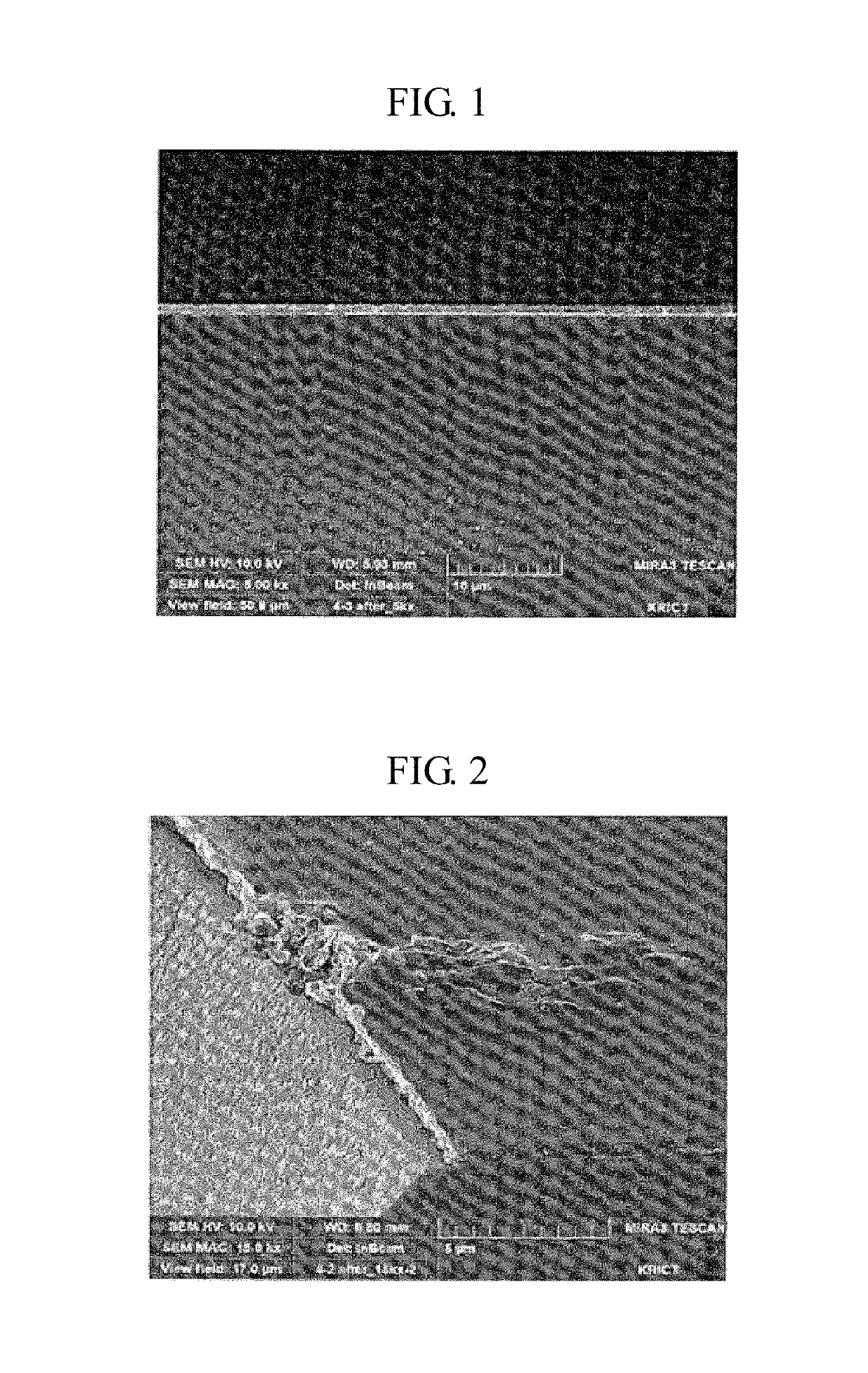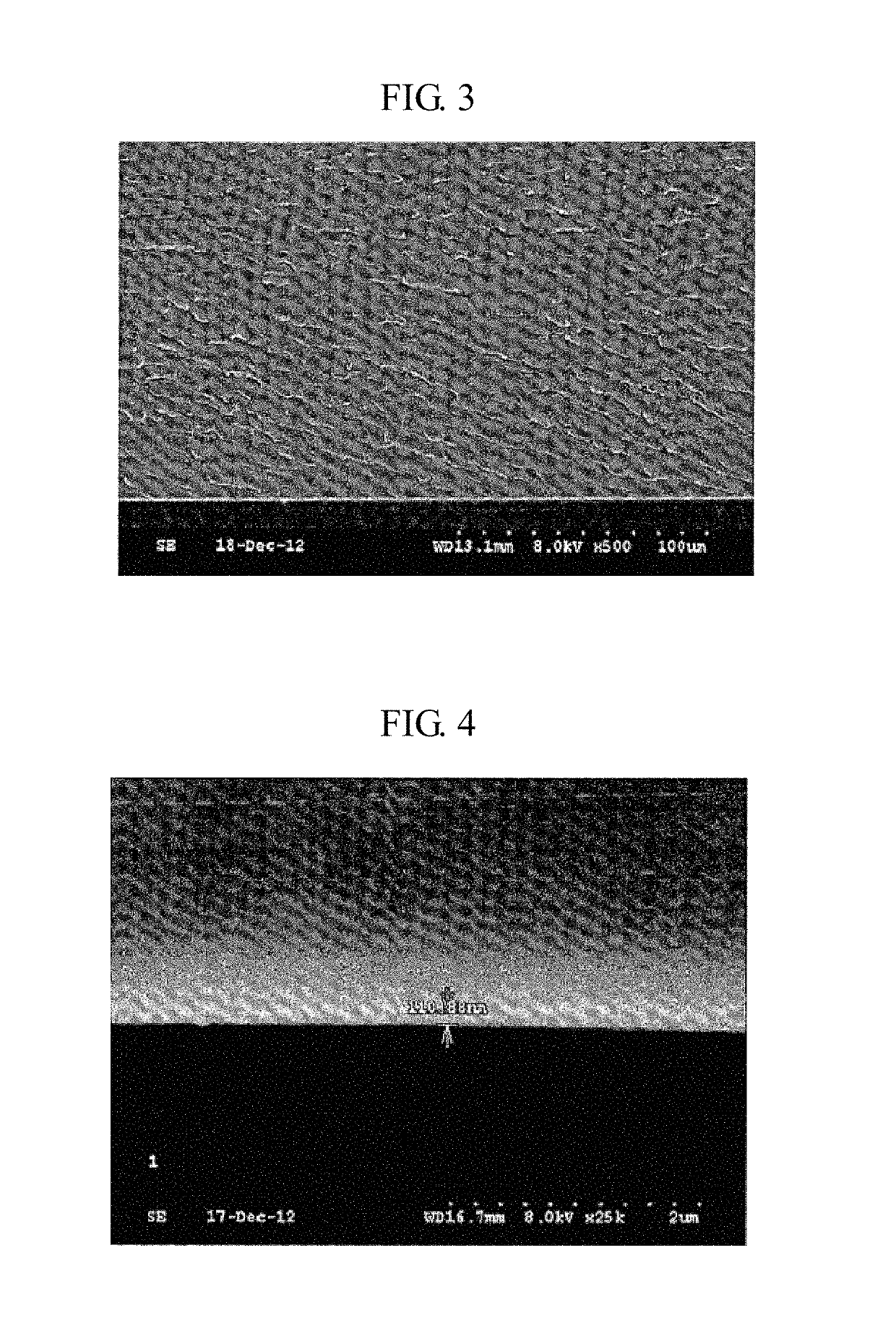Hydrogel contact lens having wet surface, and manufacturing method therefor
a technology manufacturing method, which is applied in the direction of optical elements, instruments, spectales/goggles, etc., can solve the problems of hydrogel contact lens, corneal edema, and oxygen permeability reduction, so as to improve wettability, improve wettability, and improve physical properties
- Summary
- Abstract
- Description
- Claims
- Application Information
AI Technical Summary
Benefits of technology
Problems solved by technology
Method used
Image
Examples
example 1
[0107]As shown in [Table 2] below, the silicone hydrogel contact lens substrate manufactured in Manufacturing Example 2 was immersed in 40 wt % aqueous ethanol solution, and swollen for 1 hour. Then, the contact lens was immersed in the surface-modifying solution, and reacted at 80° C. for 1 hour, such that the surface was modified (the hydrophilic surface layer was formed on the surface of the substrate). As the surface-modifying solution, the hyaluronate compound, the hydrophilic monomer, the crosslinking agent, and the water-soluble initiator, were mixed in distilled water to be used.
[0108]Then, after the modification was completed, the lens was washed for 2 hours with 80° C. deionized water, and sterilized by a high pressure steam sterilization method at 121° C. for 20 minutes, thereby finally manufacturing the surface-modified silicone hydrogel contact lens. As described above, the physical properties of the obtained silicone hydrogel contact lens were evaluated, and results th...
examples 2 to 3
[0109]As shown in [Table 2] below, the silicone hydrogel contact lens was manufactured by the same method as Example 1 except that the content of the crosslinking agent was changed in the surface-modifying solution. The physical properties of the obtained product were evaluated, and results thereof were shown in [Table 3] below.
example 4
[0110]As shown in [Table 2] below, the acrylate-based hydrogel contact lens substrate manufactured in Manufacturing Example 1 was immersed in 40 wt % aqueous ethanol solution, and swollen for 1 hour. Then, the contact lens was immersed in the surface-modifying solution, and reacted at 80° C. for 1 hour, such that the surface was modified (the hydrophilic surface layer was formed on the surface of the substrate). As the surface-modifying solution, the hyaluronate compound, the hydrophilic acrylate monomer, and the water-soluble initiator, were mixed in distilled water to be used.
[0111]Then, after the modification was completed, the lens was washed for 2 hours with 80° C. deionized water, and sterilized by a high pressure steam sterilization method at 121° C. for 20 minutes, thereby finally manufacturing the surface-modified acrylate-based hydrogel contact lens. As described above, the physical properties of the obtained acrylate-based hydrogel contact lens were evaluated, and results...
PUM
| Property | Measurement | Unit |
|---|---|---|
| thickness | aaaaa | aaaaa |
| weight ratio | aaaaa | aaaaa |
| weight ratio | aaaaa | aaaaa |
Abstract
Description
Claims
Application Information
 Login to View More
Login to View More - Generate Ideas
- Intellectual Property
- Life Sciences
- Materials
- Tech Scout
- Unparalleled Data Quality
- Higher Quality Content
- 60% Fewer Hallucinations
Browse by: Latest US Patents, China's latest patents, Technical Efficacy Thesaurus, Application Domain, Technology Topic, Popular Technical Reports.
© 2025 PatSnap. All rights reserved.Legal|Privacy policy|Modern Slavery Act Transparency Statement|Sitemap|About US| Contact US: help@patsnap.com


